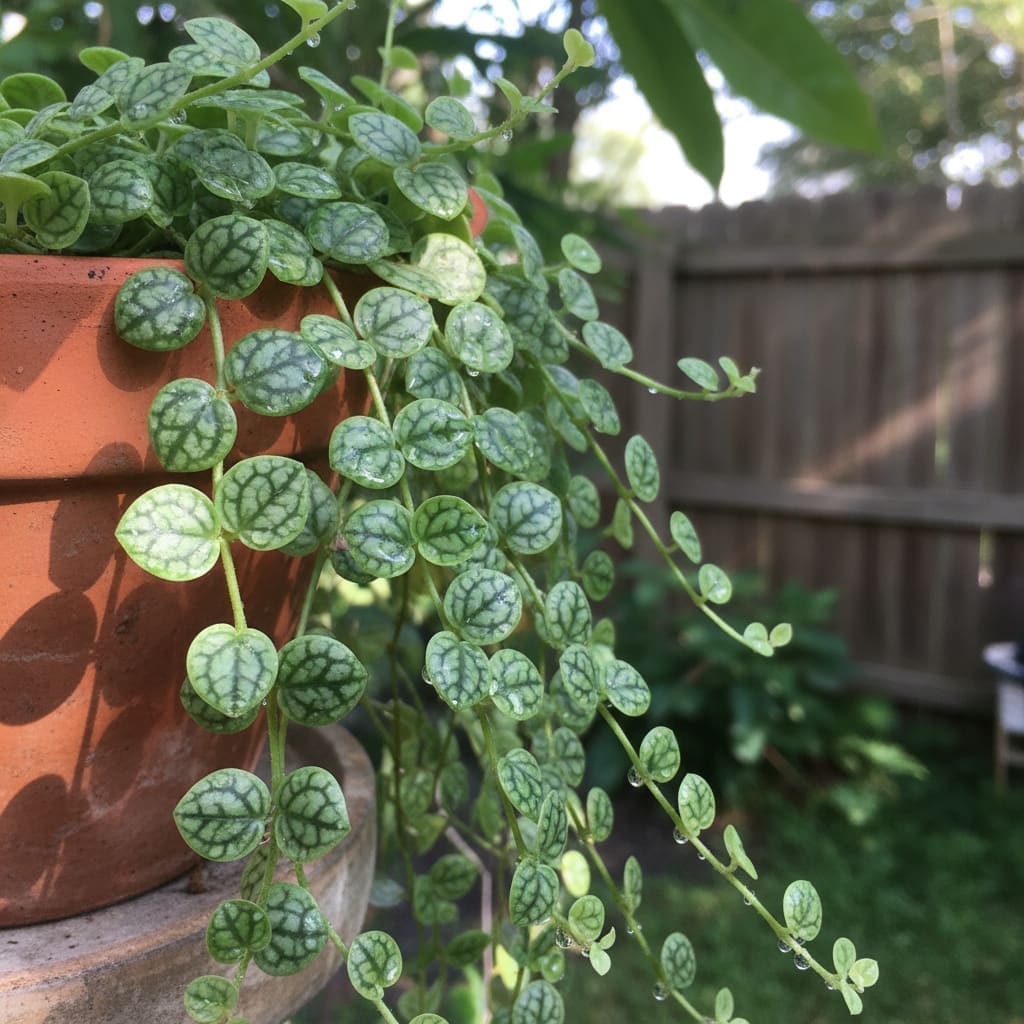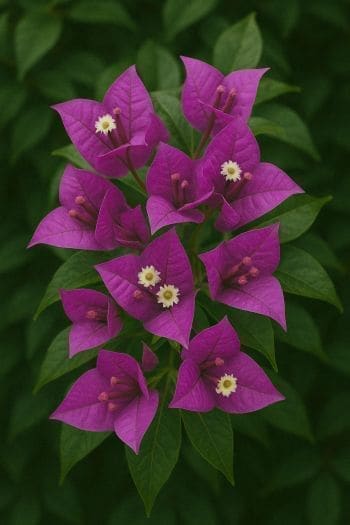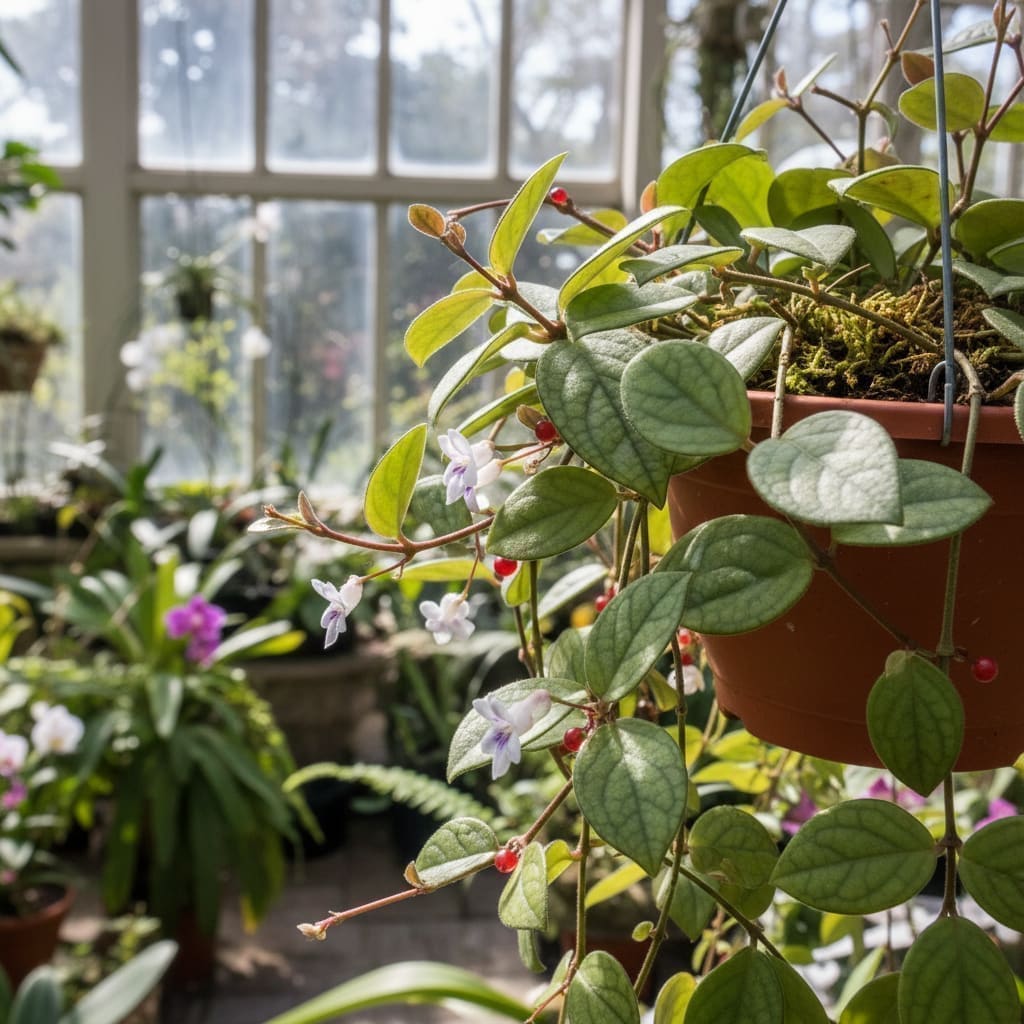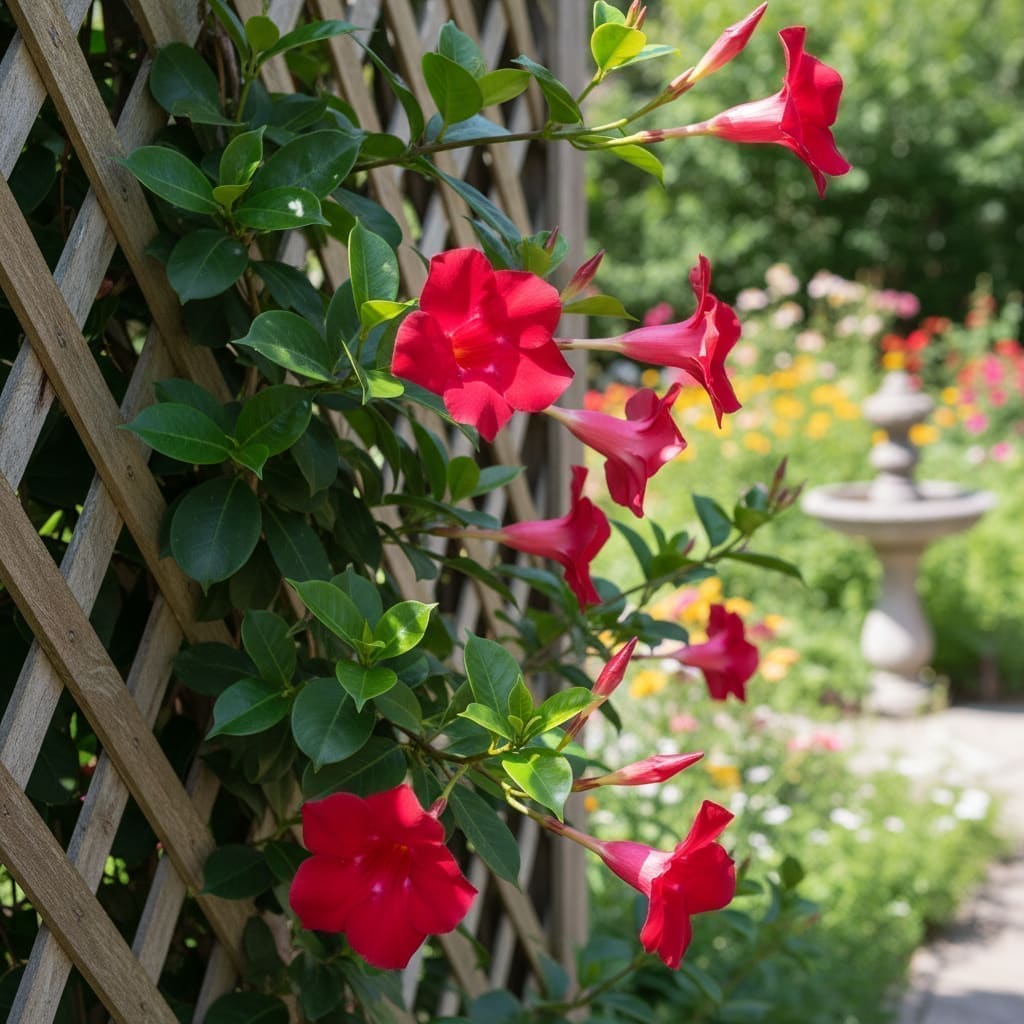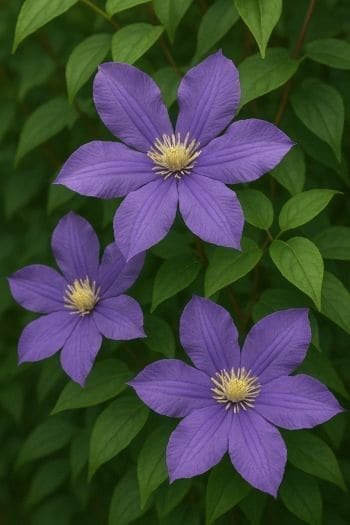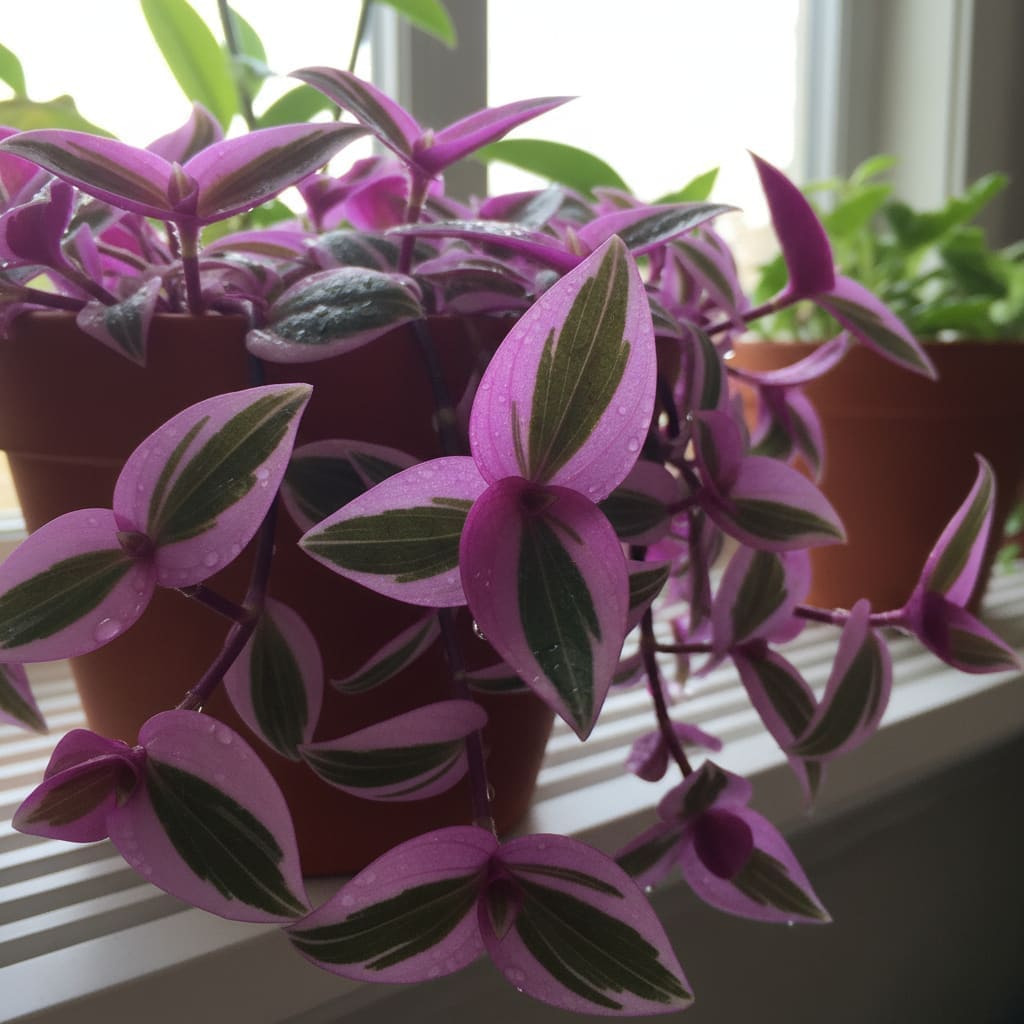Peperomia prostrata (String of Turtles) Care & Growing Guide
Overview
Peperomia prostrata, commonly known as the String of Turtles, is a small, trailing perennial plant native to the rainforests of Brazil. Belonging to the Piperaceae family, it is prized for its distinctive, round leaves patterned like miniature turtle shells. This slow-growing plant is a favorite among indoor gardeners for its unique foliage and compact growth, making it ideal for small spaces, hanging baskets, or terrariums.
In its native habitat, Peperomia prostrata grows as a groundcover or climbs over mossy logs, benefiting from the filtered light and high humidity of the forest understory. Indoors, it thrives when these conditions are mimicked.
Identification & Growth Habit
Peperomia prostrata is a trailing plant with delicate, thread-like stems that can cascade over the sides of containers or climb if given support. The leaves are small (about 1 cm in diameter), round, and fleshy, with a dark green base color overlaid by intricate, pale green to silvery veining. The undersides of the leaves often have a reddish hue.
Growth is relatively slow, but with proper care, stems can reach lengths of 12–24 inches (30–60 cm). The plant may produce small, spike-like inflorescences, though these are not particularly showy.
Light & Placement
Provide bright, indirect light to maintain the vivid leaf patterns. Direct sunlight can scorch foliage and cause fading. An east-facing window is ideal; in south or west exposures, use sheer curtains to diffuse light. If natural light is insufficient, a full-spectrum LED grow light can supplement.
- Ideal light: Bright, indirect
- Avoid: Prolonged direct sun or deep shade
Watering & Humidity
Water moderately, allowing the top 1–2 inches (2.5–5 cm) of soil to dry between waterings. In spring and summer, keep the soil slightly moist but never soggy. In fall and winter, reduce frequency and use a soak-and-dry approach to prevent root rot.
Maintain moderate to high humidity (50–60%) to mimic its tropical origins. Increase humidity with a room humidifier, pebble tray, or occasional misting, ensuring leaves do not stay wet for extended periods to avoid fungal issues.
Soil & Repotting
Use a well-draining, organic-rich potting mix containing peat moss to retain moisture without waterlogging. Avoid overly gritty succulent mixes. A blend of peat, perlite, and fine bark works well.
Repot only when the plant becomes root-bound or the soil has degraded, typically every 2–3 years. Choose a shallow pot with drainage holes to accommodate its shallow root system.
Fertilizing
Feed with a balanced, water-soluble houseplant fertilizer diluted to half strength every two weeks during active growth (spring and summer). Cease fertilizing in fall and winter when growth slows.
Pruning & Training
Prune to control length, encourage branching, and remove damaged foliage. Use clean, sharp scissors to cut just above a leaf node.
While naturally trailing, Peperomia prostrata can be trained to climb a small trellis or moss pole. Secure stems gently with plant ties, and ensure adequate light to encourage upward growth.
Propagation
Step-by-Step Stem Cutting Method
- Select a healthy vine with several leaves.
- Using sterilized scissors, cut just below a node.
- Remove the lowest leaf to expose the node for rooting.
- Place the cutting in a jar of water or directly into moist potting mix.
- Provide bright, indirect light and maintain humidity.
- Roots typically develop within a few weeks; transplant water-rooted cuttings into soil once roots are 1–2 inches long.
Common Problems
Pests
- Mealybugs: Remove with a cotton swab dipped in alcohol; isolate affected plant.
- Spider mites: Increase humidity and rinse foliage; use insecticidal soap if needed.
- Fungus gnats: Allow soil surface to dry between waterings; use sticky traps.
Diseases
- Root rot: Caused by overwatering or poor drainage; remove affected roots and repot in fresh soil.
- Leaf spot: Avoid overhead watering; remove affected leaves and improve air circulation.
Toxicity & Pet Safety
Peperomia prostrata is considered toxic if ingested. Keep out of reach of pets and children, and seek veterinary advice if ingestion occurs.
Styling & Decor Tips
- Display in a hanging basket to showcase cascading stems.
- Use as a trailing accent on shelves or plant stands.
- Incorporate into a mixed-species terrarium for a lush, miniature landscape.
Varieties & Cultivars
Peperomia prostrata is unique within its genus for its turtle-shell leaf pattern. While there are no widely recognized named cultivars, related species such as Peperomia rotundifolia and Peperomia hoffmannii offer similar trailing habits with different leaf shapes and patterns.
Buying Tips & Maturity
When purchasing, choose plants with firm, patterned leaves and no signs of pests or rot. Avoid specimens with yellowing or mushy foliage. Mature plants will have multiple trailing stems and dense leaf coverage, but growth is slow, so patience is required.
Seasonal Care
- Spring/Summer: Active growth; regular watering and feeding; ideal time for propagation.
- Fall/Winter: Reduced growth; water less frequently; stop fertilizing; protect from cold drafts.
FAQ
- How fast does Peperomia prostrata grow?
It is a slow grower, often taking several months to noticeably lengthen stems under ideal conditions. - Can String of Turtles be grown outdoors?
Only in warm, frost-free climates with filtered light; otherwise, keep indoors. - Why are my plant’s leaves losing their pattern?
Insufficient light is the most common cause; move to a brighter, indirect location. - Do I need to mist my Peperomia prostrata?
Occasional misting can help with humidity, but avoid prolonged leaf wetness to prevent fungal issues. - What size pot is best?
A shallow pot with good drainage suits its small root system and prevents overwatering.
Sources: Wikipedia, The Spruce
Troubleshooting Scenarios
- Leggy growth with sparse leaves: Usually due to inadequate light; relocate closer to a bright window or supplement with grow lights.
- Sudden leaf drop: Can result from abrupt temperature changes or cold drafts; maintain stable indoor temperatures between 65–75°F (18–24°C).
- Wrinkled leaves: Often a sign of underwatering; check soil moisture and adjust watering schedule.
- Soft, mushy stems: Indicative of overwatering or root rot; prune affected areas and improve drainage.
Advanced Pruning & Training Techniques
For a fuller appearance, pinch back stem tips regularly during the growing season to encourage lateral branching. When training to climb, wrap stems loosely around a miniature hoop trellis for a decorative effect, securing with soft ties. Rotating the plant every few weeks ensures even light exposure and balanced growth.
Companion Plant Suggestions
Pair Peperomia prostrata with other humidity-loving, low-light tolerant plants for cohesive displays:
- Fittonia albivenis (Nerve Plant) – contrasting leaf patterns
- Selaginella kraussiana (Club Moss) – fine-textured groundcover
- Pilea glauca – complementary trailing habit
- Ferns such as Nephrolepis exaltata – soft fronds for texture contrast
Do & Don't List
- Do: Use room-temperature, filtered water to avoid mineral buildup.
- Do: Quarantine new plants before introducing them to your collection.
- Don't: Place near heating vents or air conditioners that cause rapid drying.
- Don't: Let the plant sit in standing water in saucers or cachepots.
